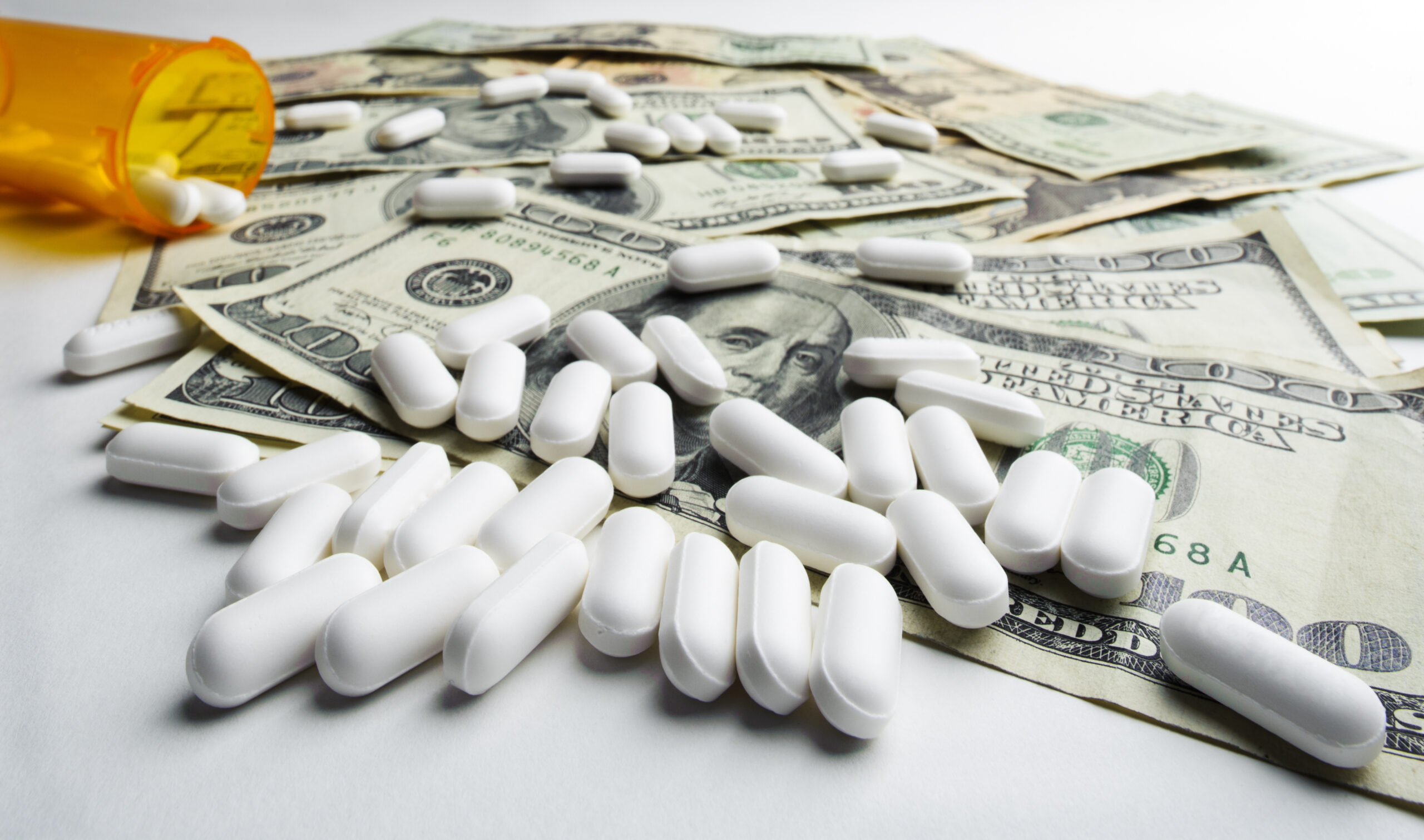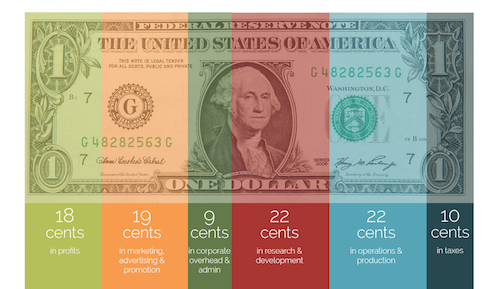© 2024 CSRXP- All Rights Reserved

“Dose of Reality” Breaking Down the Big Pharma Dollar
May 18, 2019
Part IV: Big Pharma’s Tax Conundrum
The average American spends $1,200 per year out-of-pocket on prescription drugs. Altogether, the 10 largest U.S.-based Big Pharma drug manufacturers pulled in a colossal $245 billion in revenue in just one year.
As prescription drug prices continue to climb, causing one in four Americans to not be able to afford their medications, do you ever wonder how Big Pharma spends all those dollars? We set out to get you the answer.
CSRxP, in partnership with GlobalData, conducted a study to determine how Big Pharma allocates revenue across six categories and broke it down to the dollar:

We’ve poked holes in Big Pharma’s common defense that they have to raise drug prices because they need the money for research and development (R&D), examined Big Pharma’s soaring profits and analyzed Big Pharma’s big advertising spending.
Today, we’re taking a look at Big Pharma’s complicated relationship with taxpayers.
What Big Pharma Pays Uncle Sam
The CSRxP and GlobalData study found that just 10 cents out of every Big Pharma dollar goes to Uncle Sam in taxes.
The study found that some drug makers are paying even less. Pfizer, the largest Pharma giant by overall revenue, posted a negative effective tax rate in the year analyzed by the study. While AbbVie, the third largest by overall revenue, paid just 8.57 percent.
How Big Pharma Benefits From Tax Dollars
But while Big Pharma seems to be paying less than the corporate average in taxes, the industry is also reaping huge rewards from federal taxpayer funding through the National Institute of Health (NIH).
- “The U.S. taxpayer has funded research for every single one of the 210 new drugs that the FDA approved between 2010-16. Yet the companies that have access to this research are increasingly viewing pharmaceuticals in the same way that banks view their financial product — opportunities for short-term returns.” (Mariana Mazzucato, “Big Pharma Is Hurting Drug Innovation,” The Washington Post, 10/17/18)
- “More than $100 billion in NIH funding went toward research that contributed, either directly or indirectly, to the 210 drugs approved between 2010 and 2016. That’s roughly 20 percent of NIH spending since 2000.” (Megan Thielking, “NIH funding contributed to 210 approved drugs in recent years, study says,” STAT News, 2/12/18)
The Taxpayer Funded Big Pharma Bailout
If you think Big Pharma doesn’t already have things good enough, get this.
The U.S. Department of Health and Human Services (HHS) has proposed a misguided regulation called the Rebate Rule that government analysts and industry groups agree would cost taxpayers dearly and hand Big Pharma a more than $100 billion bailout.
- CBO: $187 Billion in Additional Federal Spending. That total includes an estimated $177 billion price tag for Medicare and Medicaid under the initially proposed rule, plus an estimated $10 billion cost for the loss-assumption program announced by CMS on April 5, 2019. (Congressional Budget Office, Incorporating The Effects Of The Proposed Rule On Safe Harbors For Pharmaceutical Rebates In CBO’s Budget Projections, 5/2/19)
- CMS: $197 Billion In Additional Federal Spending. (Center For Medicare & Medicaid Services Office Of The Actuary, Memo On Proposed Safe Harbor Regulation, 1/31/19)
- Avalere Health: The Rule Would Cost Taxpayers More Than $410 Billion, More Than The Congressional Budget Office (CBO) Projected The Creation Of The Part D Program Would Cost. (Avalere Health, Costs for Taxpayers Could Skyrocket Under Proposed Rebate Rule, 4/8/19)
- CMS: Rule Hands Big Pharma $137 Billion In Increased Drug Spending. (Center For Medicare & Medicaid Services Office Of The Actuary, Memo On Proposed Safe Harbor Regulation, 1/31/19)
Over the last week we’ve analyzed the “Big Pharma Dollar” and the industry’s spending on profits, advertising, taxes and research and development – in light of drug makers’ continued price-gouging of American patients.
What is clear? Policymakers in Washington need to hold Big Pharma accountable with market-based solutions that increase competition and boost transparency. They must also steer clear of misguided diagnoses like the Rebate Rule that will hand Big Pharma even greater profits and power over pricing.
Learn more about CSRxP’s solutions to lower prescription drug prices and deliver relief for American patients HERE.
CLICK HERE to read: Breaking Down the Big Pharma Dollar Part I: The Math Undercuts the R&D Defense.
CLICK HERE to read: Breaking Down the Big Pharma Dollar Part II: An Industry Booming Off of Price-Gouging.
CLICK HERE to read: Breaking Down the Big Pharma Dollar Part III: As Prices Rise, So Too Does Ad Spending.
###
